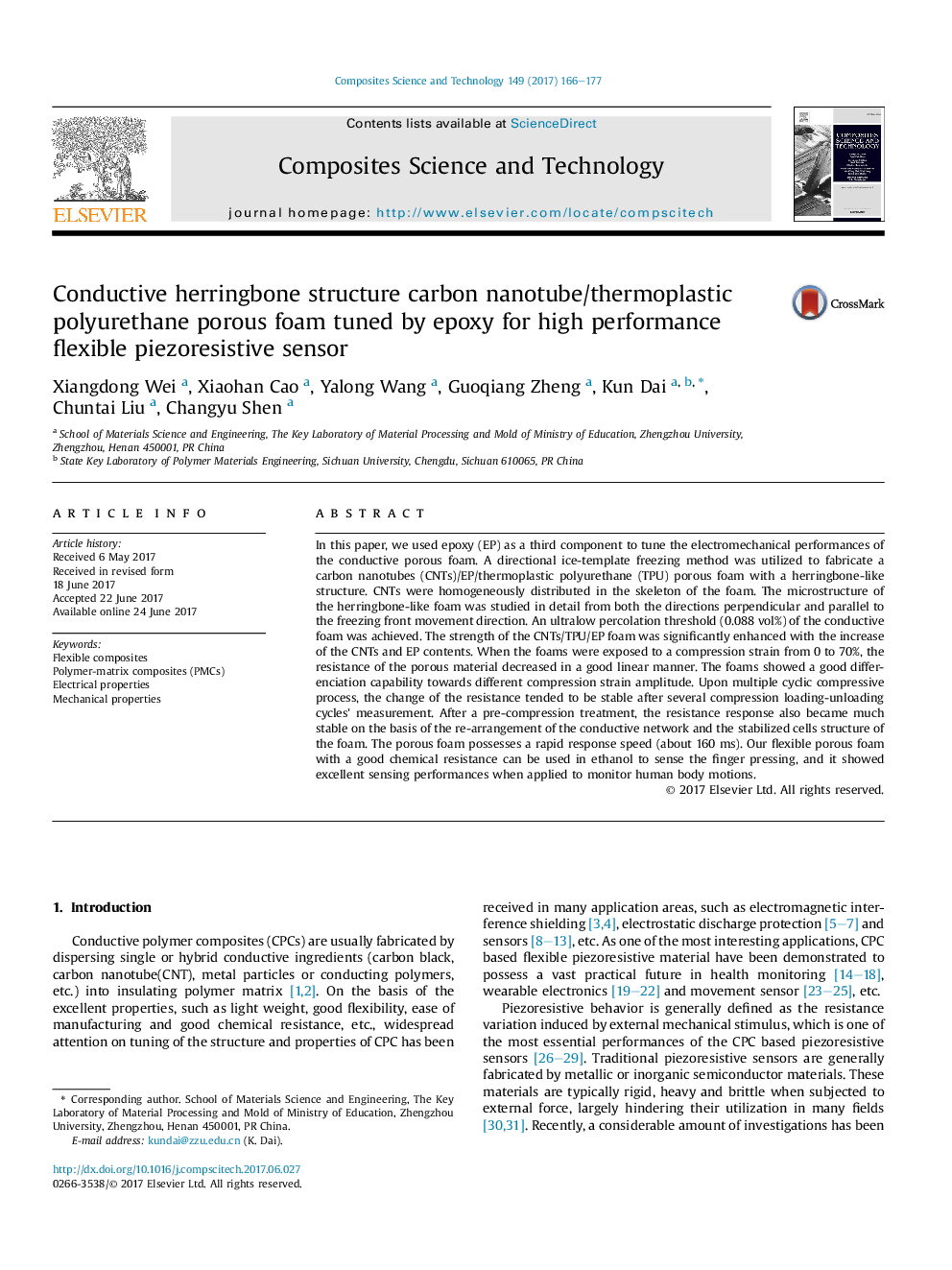| Article ID | Journal | Published Year | Pages | File Type |
|---|---|---|---|---|
| 5022049 | Composites Science and Technology | 2017 | 12 Pages |
Abstract
In this paper, we used epoxy (EP) as a third component to tune the electromechanical performances of the conductive porous foam. A directional ice-template freezing method was utilized to fabricate a carbon nanotubes (CNTs)/EP/thermoplastic polyurethane (TPU) porous foam with a herringbone-like structure. CNTs were homogeneously distributed in the skeleton of the foam. The microstructure of the herringbone-like foam was studied in detail from both the directions perpendicular and parallel to the freezing front movement direction. An ultralow percolation threshold (0.088Â vol%) of the conductive foam was achieved. The strength of the CNTs/TPU/EP foam was significantly enhanced with the increase of the CNTs and EP contents. When the foams were exposed to a compression strain from 0 to 70%, the resistance of the porous material decreased in a good linear manner. The foams showed a good differenciation capability towards different compression strain amplitude. Upon multiple cyclic compressive process, the change of the resistance tended to be stable after several compression loading-unloading cycles' measurement. After a pre-compression treatment, the resistance response also became much stable on the basis of the re-arrangement of the conductive network and the stabilized cells structure of the foam. The porous foam possesses a rapid response speed (about 160Â ms). Our flexible porous foam with a good chemical resistance can be used in ethanol to sense the finger pressing, and it showed excellent sensing performances when applied to monitor human body motions.
Keywords
Related Topics
Physical Sciences and Engineering
Engineering
Engineering (General)
Authors
Xiangdong Wei, Xiaohan Cao, Yalong Wang, Guoqiang Zheng, Kun Dai, Chuntai Liu, Changyu Shen,
